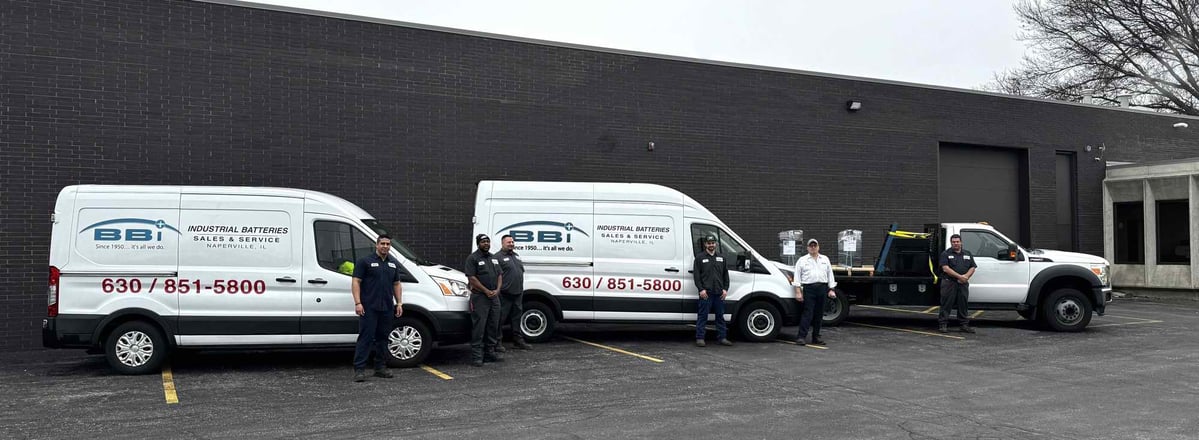
Lead Acid Forklift Batteries vs. Lithium-Ion
In the world of material handling and logistics, choosing the right power source for your forklifts is crucial. Two prominent types of forklift batteries stand out: Lead Acid Forklift Batteries and Lithium-Ion Batteries. Each has its unique set of advantages and disadvantages that can significantly affect operational efficiency, maintenance costs, and overall performance. This article dives deep into the Lead Acid Forklift Batteries vs. Lithium-Ion debate, helping you make an informed choice for your business.
Understanding Forklift Batteries
When discussing forklift batteries, it’s essential to understand what they are and how they function in powering electric forklifts.
What Are Forklift Batteries?
Forklift batteries are rechargeable energy sources specifically designed to provide power to electric forklifts. They come in various types, each with distinct characteristics that influence their performance and suitability for different applications.
- Traditionally the most common type used in warehouses and distribution centers.
- Made from lead plates submerged in sulfuric acid.
- A newer technology gaining popularity due to its many advantages.
- Comprises lithium salts as the electrolyte, which allows for higher energy density.
How Do Forklift Batteries Work?
Both types of batteries operate on fundamental principles of electrochemistry but differ in construction and performance:
-
Lead Acid Technology: In this setup, chemical reactions between lead dioxide (positive plate), sponge lead (negative plate), and sulfuric acid create electricity. When charged, the process reverses, restoring the chemicals to their original state.
-
Lithium-Ion Technology: Here, lithium ions move from the anode to cathode during discharge and back during charging cycles. This movement allows for faster charging times and longer operational life compared to lead-acid counterparts.
Lead Acid Forklift Batteries vs. Lithium-Ion: Performance Comparison
When comparing Lead Acid Forklift Batteries vs. Lithium-Ion, several performance metrics come into play that can impact your decision-making process.
Energy Density and Runtime
One critical aspect is energy density—the amount of energy stored in a given volume or weight.
-
Lead Acid Forklift Batteries typically have a lower energy density than lithium-ion batteries, meaning they need more physical space and weight to store equivalent energy levels.
-
Lithium-Ion Batteries, on the other hand, offer significantly higher energy densities. This results in longer runtimes with less weight—perfect for applications where minimizing load is essential.
| Metric | Lead Acid | Lithium-Ion | |-------------------------------|----------------------|---------------------| | Energy Density | Lower | Higher | | Average Runtime per Charge | 6-8 hours | 8-12 hours | | Weight | Heavier | Lighter |
Charging Time
Charging time is another crucial factor to consider when weighing these battery options:
-
Lead Acid Batteries usually require longer charging periods—often between 8-12 hours—making them less efficient if you need quick turnaround times.
-
Conversely, Lithium-Ion Batteries can recharge much faster—often within just 1-2 hours—enabling greater operational flexibility.
Lifespan and Maintenance Needs
The lifespan of a battery influences long-term costs significantly:
-
A typical Lead Acid battery may last around 1,500 discharge cycles under proper maintenance but requires regular watering and cleaning to ensure optimal performance.
-
On the flip side, Lithium-Ion batteries can last up to 3,000 cycles or more with minimal maintenance requirements since they do not need regular watering or equalizing charges.
Cost Implications of Lead Acid vs. Lithium-Ion Forklift Batteries
While upfront costs are important when purchasing forklift batteries, it’s vital to consider total cost of ownership over time:

Initial Investment Costs
- Generally speaking, Lead Acid Forklift Batteries have a lower initial purchase price than Lithium-Ion options. For businesses operating on tight budgets or limited capital expenditures, this may seem appealing at first glance.
Operational Costs Over Time
However, it’s essential not to overlook ongoing operational expenses:
- Lead Acid batteries incur additional costs associated with maintenance (e.g., water refills).
- Lithium-Ion batteries require less intervention but might have a higher initial investment.
- The extended lifespan of Lithium-Ion batteries means fewer replacements over time compared to their lead-acid counterparts.
- Lithium-ion batteries also tend to be more efficient in terms of energy usage during charging cycles compared to lead-acid alternatives.
Given all these factors, while Lead Acid may be cheaper upfront, the long-term savings often favor Lithium-Ion technologies.
Environmental Impact Considerations
In today’s eco-conscious world, sustainability plays an increasingly vital role in purchasing decisions:
Recycling Potential
Both types of batteries have recyclable components; however:
-
Lead Acid batteries can pose environmental hazards if not disposed of properly due their toxic materials.
-
In contrast, while Lithium-Ion recycling technologies are still developing; they generally contain fewer environmental risks when managed correctly through responsible disposal processes.
Carbon Footprint Analysis
Li-ion technology tends to contribute less CO2 emissions over its lifecycle compared with traditional lead-acid systems due primarily to greater efficiency during use phases; hence many companies opt for greener solutions by integrating these advanced power sources into operations whenever possible!
FAQs
1. What is the main difference between Lead Acid and Lithium-Ion forklift batteries?
The primary difference lies in their chemical composition; Lead Acids utilize lead plates submerged in sulfuric acid whereas Lithium-Ions use lithium salts as electrolytes leading to significant differences in energy density and lifespan.

2. How long do Lead Acid forklift batteries last?
Typically between 1,500 discharge cycles assuming proper maintenance practices are followed throughout usage periods such as regular watering & cleaning routines!
3. Can I switch from one type of battery system (Lead-Acid) over directly onto another type (Lithium)?
While technically feasible switching systems requires careful consideration regarding compatibility with existing equipment & infrastructure prior making any changes!
4. Are there specific applications better suited for one battery type versus another?
Absolutely! Heavy-duty applications requiring extended run-times benefit from Li-ion solutions while lighter duty tasks may find lead-acid sufficient depending on circumstances involved within operations being 36 volt flat plate forklift batteries performed regularly!
5. Is installation complicated when using different kinds?
Installation processes vary based upon manufacturer specifications however most require only minor alterations making transitions manageable without extensive downtime incurred during implementations themselves!
6. What about safety comparisons between these two types?
Both battery types have inherent risks associated but modern advancements have helped improve overall safety features present across both domains ensuring minimal risks associated regardless chosen path taken!
Conclusion
In conclusion, choosing between Lead Acid Forklift Batteries vs. Lithium-Ion ultimately depends on your particular business needs including budget constraints & operational requirements! While lead acid remains cost-effective initially it often incurs additional long-term costs 24 volt flat plate forklift batteries through maintenance & replacement frequency making lithium-ion an attractive alternative offering superior performance capabilities throughout varying conditions encountered during daily operations!
Ultimately weighing all aspects carefully—including environmental considerations—will yield better insights guiding towards selecting most appropriate solution tailored towards maximizing productivity outcomes effectively—no matter what direction chosen!